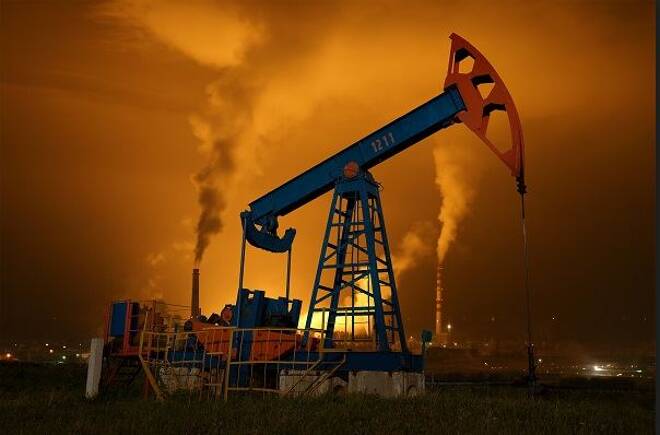Advertisement
Advertisement
WTI Price Analysis for April 21, 2017
By:
Oil prices rebounded slightly on Thursday following a 4% tumble on Wednesday following the unexpected build in gasoline inventories, reported by the
Oil prices rebounded slightly on Thursday following a 4% tumble on Wednesday following the unexpected build in gasoline inventories, reported by the Energy Information Administration. The build in crude oil was also larger than expected and demand for gasoline continues to lag on a year over year basis. The only bright spot is distillate demand which continue to rise at double digit levels given the high level of distillate exports flowing out of the United States.
Technicals
Price action looks negative, and crude appears to have had a dead cat bounce, where there was very little upward momentum, following Wednesday sharp decline. Prices attempted to move higher but were unable to gain any traction and eventually fell by approximately 0.35% on Thursday. Support is seen near an upward sloping trend line generated from connecting the lows in August to the lows in November that comes in near 48.10. Resistance on crude oil prices is seen near the 10-day moving average at 52.25.
Prices continue to form a head and shoulder reversal pattern, with price action forming the right shoulder presently. The neckline is near the 48 handle and a break of this level would lead to a test of the 44 region. Generally, the distance the market can fall is equal to the distance from the neckline to the head which is approximately $10 per barrel.
Momentum has turned negative as the MACD (moving average convergence divergence) index generated a crossover sell signal. This occurs as the spread (the 12-day moving average minus the 26-day moving average) crosses below the 9-day moving average of the spread. The index moved from positive to negative territory confirming the sell signal. The index is printing in the red with a downward sloping trajectory which points to lower price for crude oil. Additionally, the RSI (relative strength index) moved lower with price action, reflecting accelerating negative momentum. The current reading of 42, is still in the middle of the neutral range, which generally reflects consolidation.
The hourly chart of crude oil shows that prices are forming a bear flag pattern. This is a continuation pattern that is a pause that refreshes. A break of support on an hourly basis seen near 49.88, would see a test of horizontal trend line support near 49.27, and then 48.34, and finally 47.07. While there appear to be many levels resistance, prices could quickly move through these levels.
OPEC Likely to Keep Production Cuts
OPEC intimated that it likely to reach an agreement to extend the group’s production cuts into the second half of 2017, according to the Saudi Arabia’s energy minister. Saudi is the largest producer and their support is key to OPEC’s efforts to curb output. OPEC will meet on May 25, to determine whether they will extend their 1.2 million barrel a day agreement into the second half of 2017.
Saudi Arabia’s and Kuwait’s oil ministers stated that OPEC members are building a consensus on the extension of the cartel’s six-month oil production cut agreement, strengthening optimism about international prices. Speaking at a conference in the UAE, Khalid al-Falih said “We are talking to all countries. We have not reached an agreement for sure, but the consensus is building.” His Kuwaiti counterpart, Essam al-Marzouq, confirmed the progress in negotiations, also noting that compliance with the agreement was rising among its non-OPEC parties, which, according to him, showed “the importance of extending the agreement.” Al-Marzouq added that Russia has given its preliminary consent to the extension.
Gasoline Demand is Lower than 2016
Gasoline demand ahead of the driving season has slowed, with distillate showing the only silver lining along with Jet fuel demand. Total products demand over the last four-week period averaged over 19.7 million barrels per day, down by 0.8% from the same period last year, according to the EIA. Over the last four weeks, gasoline demand averaged over 9.3 million barrels per day, down by 0.7% from the same period last year. While 9.3 million barrels is robust, the comparisons to last year remain difficult as demand peaked with lower prices in 2016. Distillate fuel demand averaged 4.3 million barrels per day over the last four weeks, up by 9.9% from the same period last year. Strong exports continue to keep distillate demand robust. Diesel demand continues to drive exports. Jet fuel demand is up 7.3% compared to the same four-week period last year, as air travel demand continue to remain strong.
About the Author
David Beckerauthor
David Becker focuses his attention on various consulting and portfolio management activities at Fortuity LLC, where he currently provides oversight for a multimillion-dollar portfolio consisting of commodities, debt, equities, real estate, and more.
Did you find this article useful?
Latest news and analysis
Advertisement
